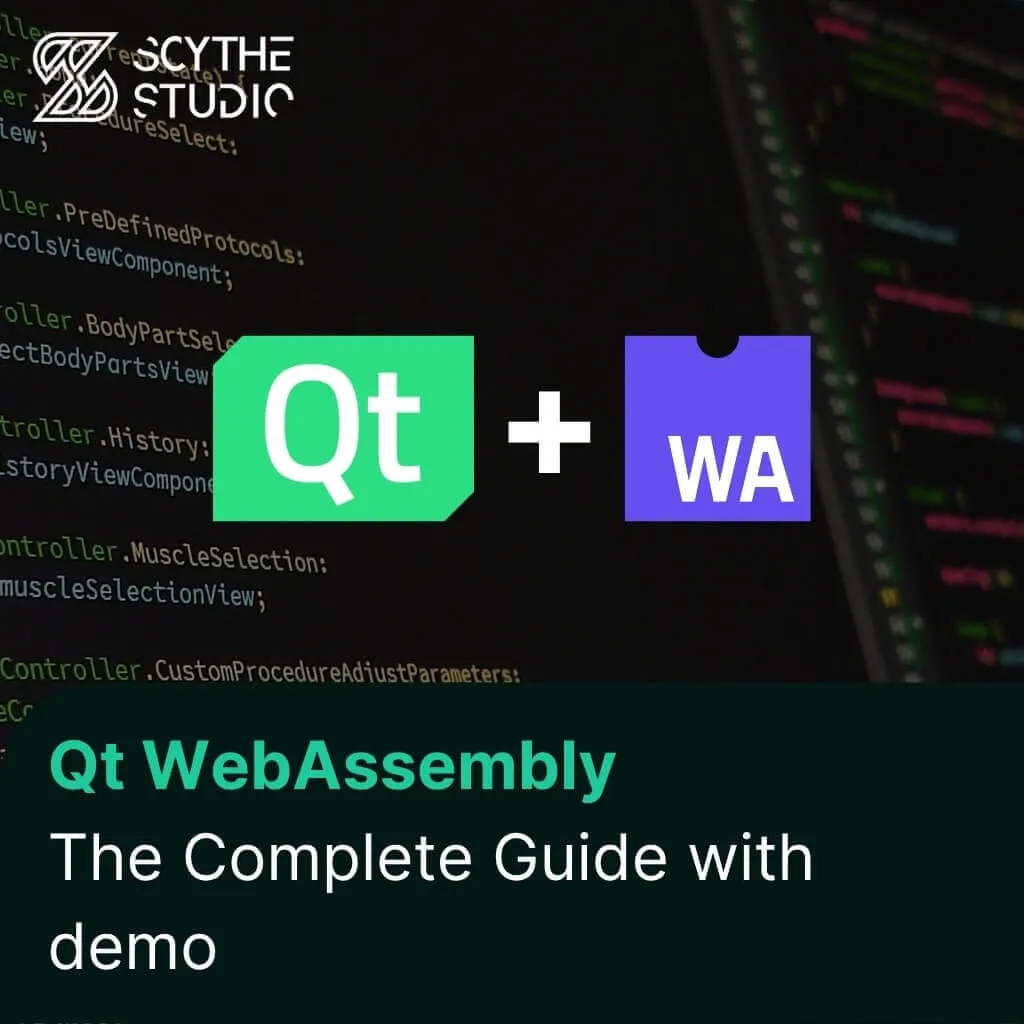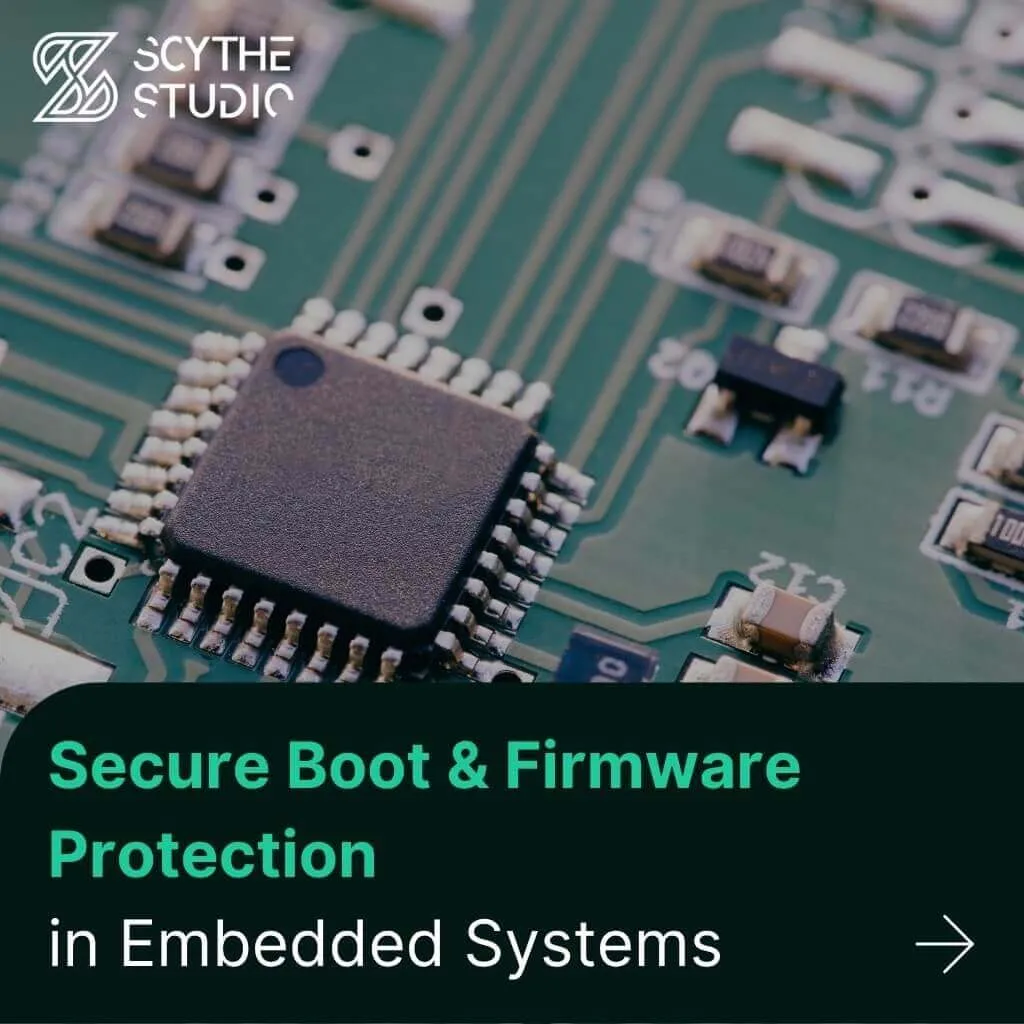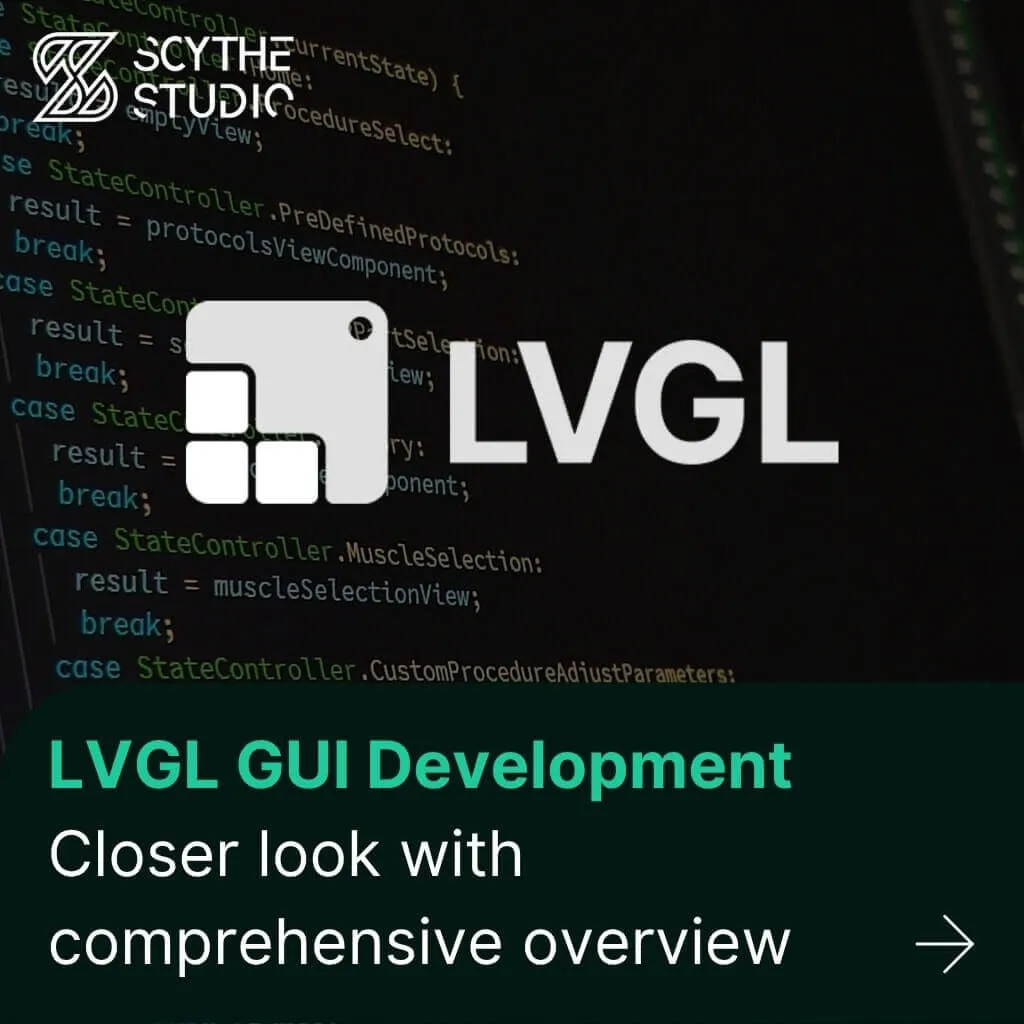
How to use Qt WebAssembly – The Complete Guide with demo
Hey, welcome back to another blog post. Today we’re going to talk about the new Qt WebAssembly. This post will […]
Join us at Qt C++ Warsaw Meetup - 21.08.2025
Sign up for free!
Choosing the right Real-Time Operating System (RTOS) is key to performance, reliability, and efficiency in embedded systems development. This article will guide you through understanding RTOS, its components, pros and cons, and types, as well as how to choose the best Real-Time Operating System for your application.
This article is a guide with the most essential information that you need to choose an operating system capable of handling critical tasks.
A Real-Time Operating System (RTOS) is a special-purpose operating system designed to meet the strict timing requirements of real-time applications. Unlike general purpose operating systems (GPOS) which prioritize many features and functionality, an RTOS prioritizes tasks to be executed within specific time bounds. This level of determinism and predictability is critical for systems like air traffic control systems, radar systems, and defense systems where real-time control is non-negotiable.
The table below summarizes the differences between a Real-Time Operating System (RTOS) and a General-Purpose Operating System (GPOS):
| Feature | RTOS | OS |
|---|---|---|
| Timing Guarantees | Deterministic, real-time behavior | Best-effort, non-deterministic |
| Task Scheduling | Priority-based, preemptive | Time-sharing, fairness-oriented |
| Resource Utilization | Optimized for system resources | Designed for general workloads |
| Overhead | Minimal | Higher due to rich feature sets |
 Key Characteristics of Real-Time Operating System
Key Characteristics of Real-Time Operating System
The architecture of an RTOS revolves around several key components that enable real-time performance and efficient handling of multiple tasks and system resources. Below are the components:
| Component | Description |
|---|---|
| Task Scheduling | Manages multiple processes by prioritizing tasks based on urgency or importance. |
| Real-Time Clock Management | Keeps track of system time, enabling precise execution of strict timing constraints. |
| Synchronization Mechanisms | Includes semaphores and mutexes to ensure proper coordination between tasks. |
| Memory Management | Allocates system resources efficiently to ensure stability and avoid memory leaks. |
| Inter-Task Communication | Provides mechanisms like message queues and signals for tasks to exchange data or communicate effectively. |
 Real-Time Operating System Components
Real-Time Operating System Components
Real-time operating Systems (RTOS) can be classified based on how they handle timing constraints and the consequences of missing deadlines. There are three types of RTOS: hard RTOS, Soft RTOS, and Firm RTOS, each suited to specific applications and performance requirements.
A Hard RTOS is designed to enforce deadlines strictly, where missing even a single deadline can have catastrophic consequences. These systems guarantee deterministic behavior, tasks are executed exactly when required. A Hard Real-Time Operating System is used in safety-critical applications where human lives or big financial investments are at stake.
In such applications predictability is non-negotiable and the system must be designed to handle worst-case scenarios without failure.
A Soft RTOS is more relaxed in its timing approach. It aims to meet deadlines but occasional delays are acceptable as long as the overall system performance is not severely impacted. These are suitable for applications where timing is important but not life-critical, where more lenient scheduling and resource management are allowed.
Soft Real-Time Systems balances performance and resource usage, suitable for less demanding or resource-constrained environments.
A Firm RTOS is in between Hard and Soft RTOS. It enforces deadlines more strictly than a Soft RTOS but less rigidly than a Hard RTOS. Missing a deadline in a Firm Real-Time Operating System does not result in catastrophic failure but reduces the utility or performance of the system, which may lead to degraded user experience or financial loss.
Firm RTOS is suitable for applications where performance degradation is tolerable but should be minimized to maintain reliability and usability.
 Types of RTOS
Types of RTOS
RTOS provides critical advantages for embedded systems, especially in applications that require precise timing and reliability. Its deterministic behavior ensures critical tasks are executed within strict deadlines, perfect for time-critical applications like automotive safety or medical devices. RTOS also optimizes resource utilization and allows efficient use of limited CPU, memory, and power in embedded systems. It also supports scalability, systems can grow in complexity while maintaining performance and reliability. By abstracting hardware management and providing built-in functionalities, RTOS reduces development time and simplifies the integration of complex features, making it essential for industries like IoT, industrial automation, and consumer electronics.
| Advantage | Description |
|---|---|
| Deterministic Behavior | Guarantees timely and predictable task execution, essential for critical tasks. |
| Efficient Resource Utilization | Optimizes system resources like CPU, memory, and other hardware resources for embedded applications. |
| Scalability | Supports modular and scalable system design for complex applications. |
| Reliability | Enhances the stability of time-critical operations in embedded systems. |
While RTOS has many advantages, it also has its own set of challenges. Implementation requires specialized expertise due to the complexity of designing and debugging time-sensitive systems. This can increase development time and cost. RTOS also introduces some resource overhead which can be a limitation for ultra-low power devices or systems with minimal memory and processing capacity. Licensing costs for proprietary Real Time Operating System solutions like VxWorks or QNX can also be prohibitive for smaller projects. Despite these drawbacks, Real Time Operating System is still essential for applications where timing and reliability is critical.
| Disadvantage | Description |
|---|---|
| Complex Development | Designing and debugging an RTOS-based system can be challenging. |
| Resource Constraints | Requires careful optimization for limited hardware resources in embedded systems. |
| Licensing Costs | Some RTOS solutions are expensive, especially proprietary ones like VxWorks. |
| Overhead | Adds complexity compared to bare-metal programming for simple systems. |
 Medical and Science Industries often use RTOS systems
Medical and Science Industries often use RTOS systems
The first step to choosing the right operating system and making any other technical decision is to evaluate the system’s requirements. Understand the real-time constraints by determining if the application needs Hard, Soft, or Firm RTOS capabilities. For example, safety-critical systems like medical devices require strict timing guarantees, while IoT applications can tolerate occasional delays. Also, evaluate the complexity of the application, number of tasks, task priorities, and inter-process communication. Factor in performance metrics like latency, throughput, and system responsiveness to ensure the chosen Real-Time Operating System meets the application’s operational requirements.
Embedded systems vary a lot so their requirements. Do not go for overkill, but also be careful to not base on something that is too limited.
Hardware compatibility with the target platform is a key consideration when choosing an RTOS. Check if the RTOS supports the processor architecture, memory constraints, and peripheral interfaces of the system. For example, some RTOS platforms are optimized for specific microcontrollers or microprocessors while others are more broad. Also, check for hardware abstraction layers (HAL) provided by the RTOS as these simplify hardware integration and allow for a smoother transition if the hardware changes during development. Compatibility reduces development time and rework costs.
Embedded systems evolve over time, so it’s important to choose an RTOS that can scale with the system’s complexity and adapt to future requirements. Check if the Real Time Operating System supports modular architecture or can integrate additional features like networking, security, or advanced task management. Flexibility is also important; an ideal RTOS should allow customization to meet application-specific needs without unnecessary overhead. Scalability and flexibility ensure the RTOS remains viable as the project grows without requiring a complete redesign.
The relatively popular approach in building RTOS systems is (in the case of big projects) to split the functionalities in a way that not all components run on a Real-Time Operating System. For example in the case of automotive, it would make sense to base networked multimedia systems rather on Embedded Linux than on RTOS.
The financial aspect is another important consideration. RTOS platforms range from open-source (FreeRTOS or Zephyr) to proprietary (VxWorks or QNX) which can be very expensive. Open-source RTOSs are cost-effective and flexible but may lack the support and warranty of proprietary solutions. Commercial RTOSs come with extensive documentation, technical support, and certifications for safety-critical applications. Developers need to weigh the cost of licensing against the value of features, reliability, and support to ensure the RTOS fits within the project budget without compromising on quality.
I always say that the best technology is one that we know the best. Assuming that we develop embedded systems already in-house and it’s not the first time we use the real-time operating system, then it would be best to base our project on an operating system that not only answers our needs but also corresponds well with the knowledge about building hardware and software components that we have.
For example, let’s say that we choose between FreeRTOS and Zephyr. Both are open-source, and error-free, and both offer reliable real-time performance that your critical systems need. Let’s also say that we want to develop an application using Qt Framework. I would say that therefore it would be best to choose FreeRTOS as Qt doesn’t have yet support for Zephyr (they work on this though). All of that in order to stick to the technologies that we know and to not need to change the framework that we like.
The RTOS market has many platforms, each for different use cases and industries. Some RTOS solutions are open-source for budget-conscious projects and others are proprietary for high-performance, safety-critical tasks. When choosing a Real-Time Operating System you need to consider licensing, hardware compatibility, and features. Below is a comparison of popular RTOS platforms, their key features, and use cases.
| RTOS | Key Features | Use Cases | License | Support & Ecosystem |
|---|---|---|---|---|
| FreeRTOS | Lightweight, open-source, supports many MCUs, modular design. | IoT, low-power applications, wearables. | Open-source (MIT) | Large community, AWS integration. |
| VxWorks | Reliable performance, robust debugging tools, and safety certifications. | Aerospace, automotive, and medical devices. | Commercial License | Comprehensive support, and strong industry adoption. |
| QNX | Microkernel architecture, POSIX-compliant, real-time deterministic behavior. | Medical devices, industrial systems. | Commercial License | Enterprise-grade support, automotive focus. |
| Zephyr | Modular, secure, supports IoT and cloud integration, and wide hardware support. | Wearables, IoT devices, smart home systems. | Open-source (Apache) | Strong community, vendor-backed (e.g., Intel). |
| ThreadX | Small footprint, pre-certified for safety-critical applications, high performance. | Medical, industrial automation, automotive. | Commercial License | Excellent documentation and customer support. |
 Air Traffic Control Systems need RTOS for critical tasks
Air Traffic Control Systems need RTOS for critical tasks
RTOSes are in many products and embedded systems around the world, powering applications that require precise timing, reliability, and efficiency. From life-critical medical devices to high-performance automotive systems, RTOS is the backbone of modern embedded technology. Below are some of the industries and applications where Real-Time Operating System and its capability of handling time-sensitive tasks, are used.
| Industry | Use Cases |
|---|---|
| Industrial Automation | Robotics, CNC machines, real-time monitoring systems, and automated conveyor systems. |
| Medical Devices | Pacemakers, infusion pumps, real-time imaging systems like MRI, and ventilator systems. |
| Automotive Systems | ABS, engine control units (ECUs), advanced driver-assistance systems (ADAS), and in-vehicle infotainment. |
| Consumer Electronics | Smart TVs, home automation systems, wearable devices like fitness trackers, and gaming consoles. |
| IoT | Smart meters, connected sensors, industrial IoT gateways, edge computing nodes, and smart agriculture systems. |
| Aviation and Defense Systems | Autonomous vehicles and drones, radar signal processing systems, mission-critical systems, air traffic control systems, and real-time simulation systems. |
RTOS enables real-time control and user interaction in applications that require precise execution and reliability. By managing multiple tasks, system resources, and scheduling algorithms it maintains deterministic performance under tight timing constraints. Compatible with emerging technologies like machine learning integration it enables the development of innovative and dynamic systems. From executing tasks with high precision to coordinating complex operations across components, RTOS is the answer to the many and varied challenges of modern embedded systems.
Let's face it? It is a challenge to get top Qt QML developers on board. Help yourself and start the collaboration with Scythe Studio - real experts in Qt C++ framework.
Discover our capabilities
Hey, welcome back to another blog post. Today we’re going to talk about the new Qt WebAssembly. This post will […]

Users of embedded devices – from industrial controllers to consumer electronics – are often unaware of hidden vulnerabilities that threaten […]

Graphical user interfaces (GUIs) are becoming more and more important in embedded devices – from home appliances to medical equipment […]